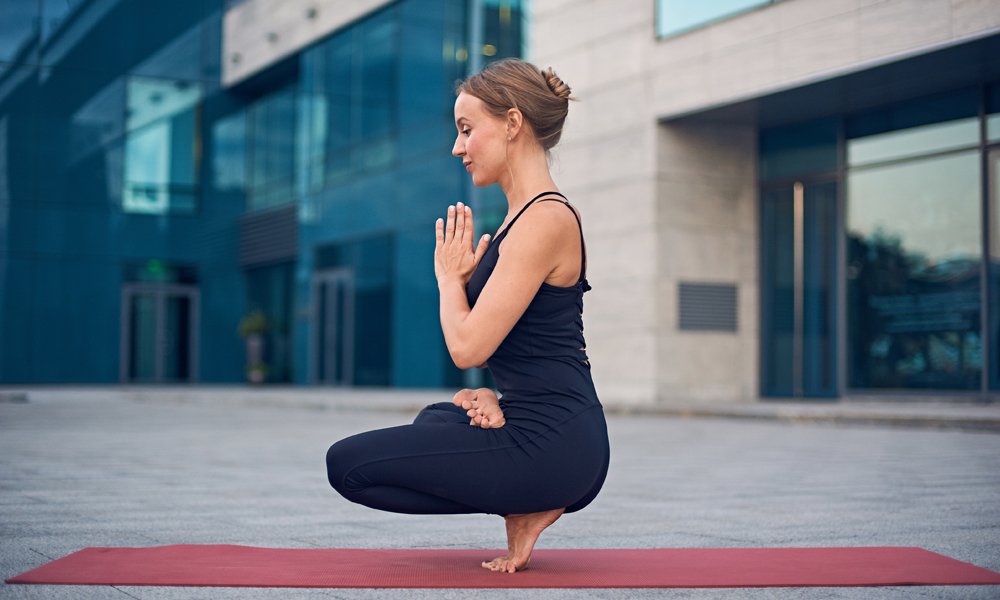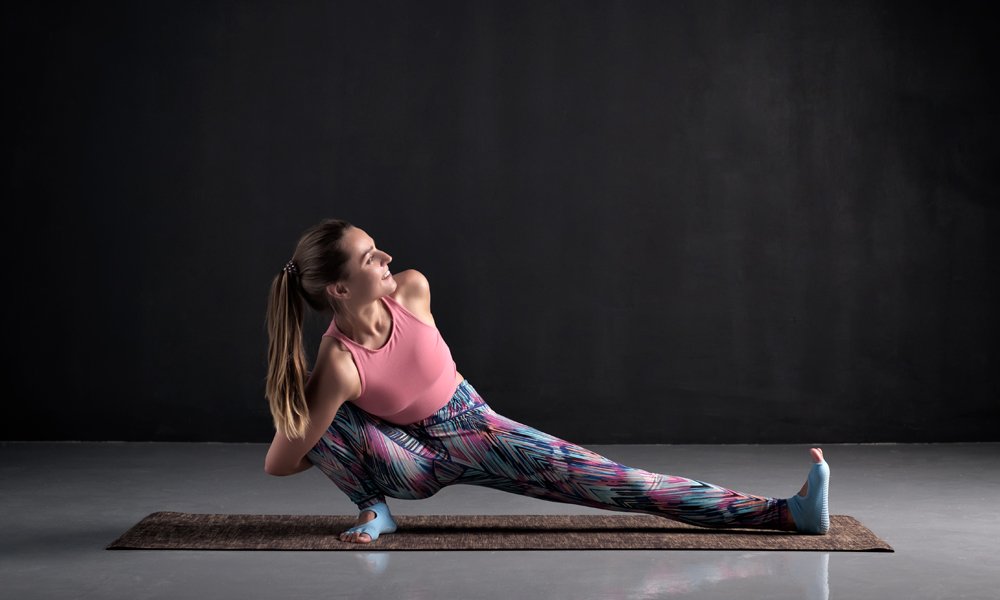Would you like to learn about yoga for bad knees or injuries?
Well, you’re in the righ tplace.
Whether you suffer pain from wear and tear, soreness or inflammation, yoga is helpful. These modified low impact poses help you exercise without further damaging the knee.
Yoga can improve leg strength and gently work muscles to help support bad knees. It’s a good cross-training exercise for runners and weightlifters.
The practice can be problematic if you do the wrong exercise. Focus on poses that reduce stress on the knees while enhancing muscle for support like the ones below.

Contents
Yoga and Bad Knees
Practicing yoga is generally safe even when you have bad knees or suffer from knee pain. To avoid damage, pay attention to your body, and acknowledge any pain or twinges, so a knee injury is not exacerbated. Safe and informed is the best way to engage in yoga for bad knees. Choosing routines and poses that will help decrease the knee problem rather than making it worse is critical.
The routines and poses you chose in yoga need to reduce your knee pain. If you have a meniscal tear, bending the knee may cause pain, so positions where a bent knee is critical will not work.
In contrast, yoga might help a degenerative or arthritic knee, because it stretches the joints. No matter what your knee issue is, there should be a way to customise yoga to meet the needs of the practitioner.
Floor routines tend to work and keep the knee safe, as do arm poses and inverted positions. Postures that are more leg intensive can be practiced, but you need to be extremely cautious of how they feel and what the movement is doing to or in the knee. You must be more mindful than usual. Be aware and make sure you remain tuned in to your body.
Modified Yoga for Bad Knees
You can practice variations of yoga poses, positions and transitions. The important thing is to transition slowly, so you do not further injure or inflame the hurting knee.
The focus during each part of the yoga routine is to reduce or eliminate irritation and pain. If something doesn’t feel right or good, then do not do it. If you choose to practice the pose, use supports such as yoga blocks or pillows.
Focus on two main things when practicing yoga with a bad knee. One, be careful not to overbend the knee at any time, especially when performing lunges. Also, avoid hyperextension when practicing a straight leg position. You never want to overdo either of these when your knee is causing you pain.
Always keep a slight bend in the knee during yoga. This will protect the knee from hyperextension. It also will help build strength around the knee through activating the muscles surrounding it.
Below are some modifications to help you continue practicing yoga while protecting your bad knee(s):
1. Warrior II ( Virabhadrasana) transitioning into Triangle Pose (Utthita Trikonasana) – The Warrior pose requires a bent knee joint, so when transitioning from it to the Triangle pose, you need to work with the leg muscles to support your front knee as it moves to an extended position. Using your quadriceps in the front of the thigh will help you avoid any chance of hyperextension.
2. Half Pigeon Pose (Ardha Kapotasana) – The pull of gravity on your body while doing the Half Pigeon is going to add pressure to the knee. Some routines may feel ok with this, but you might want to skip others. Listen to your body, specifically your knee pain, so you know what is best.
You can modify the pose to a Reclined Figure 4 position, which will allow you to control strain in the knee joint. If you pull your toes up toward the shin, then the muscles that support the knee will engage and help prevent injury as well.
3. Child’s Pose (Balasana) – Because the knee is extremely flexed in this position, this pose can lead to irritation and soreness. Modify Child’s pose with support under your body, or you can transition to a supported Hero pose (Virasana) or comfortable seat.
Routine Modifications
Modifying your yoga practice might have to include removing certain poses from your routine. This is all contingent on the knee injury. Often it is best to avoid poses that can hurt and practice those that do not involve the knee—or at least do not focus on the knee bearing weight or stress. Maintain correct posture in each yoga pose so you do not injure another part of your body.

If you have a tear or ligament injury you need to avoid The Hero pose (Virasana ), One Leg Folded Forward Bend (Trianga Mukhaikapada Paschimottanasana) and any other seated twists that involve bent knees. If you have anterior ligament damage, then avoid standing poses such as Warrior I and II. However, poses such as Boat Pose or a Headstand Pose will be ok.
You might like to try these modified poses.
1. Deep Side Lunge (Skandasana) – This lunge bends deeply at the knee, so your bottom rests on your heel. With a knee issue, ensure the range of motion is held to 90 degrees or more, so it looks like a lunge to the side without the depth. You might need substantial strength to maintain this modified pose.
2. Toe Stand Pose ( Padangusthasana) – Modify this pose so you don’t lower your seat to your heel. Focus on balance. This pose requires more strength and attention but will help you avoid irritating your knees.
3. Lotus Pose (Padmasanaain) – Because this pose needs deep hip rotation, it can cause knee pain. Half Lotus can be a good modification, as can the Butterfly (Baddha Konasana) or Head-to-Knee poses. You can use a block support under your knee if you prefer. These poses require external rotation, so be careful not to put stress on the knee. Be mindful of what your body tells you.
Final Thoughts on Yoga for Bad Knees
Yoga for bad knees is certainly available, but follow the basic premise that if a pose or transition hurts, do not do it. Pay attention to your body and adjust as needed for a good, safe workout.



